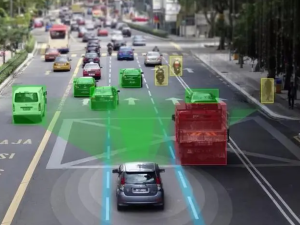目录
ToggleAutomotive cameras are essential components in modern vehicles, embedded with advanced computer vision algorithms that extract meaningful data from captured images. These cameras play a crucial role in various advanced driver assistance systems (ADAS), aiding drivers in maintaining safety on the road.
Key Features of Automotive Cameras
High-Resolution Lens Design
Automotive cameras feature high-resolution lens designs that ensure precise and steady image capture. The combination of optical and mechanical design technologies allows for superior image quality, which is essential for both ADAS and other vehicle systems.
Advanced Circuit Design
The electronic circuits within automotive camera modules are meticulously designed for optimal performance. This includes the careful selection of components, the application of high-density fine pattern technology, and thorough thermal and stress analysis. These steps contribute to the overall reliability and efficiency of the cameras, ensuring they meet the rigorous standards required for automotive-grade quality.
Ultra-High Reliability
Automotive cameras undergo strict reliability tests to ensure they can withstand the harsh conditions often encountered in vehicles. These tests include high and low-temperature storage, high and low-temperature operation, vibration tests, salt spray tests, drop tests, electrostatic discharge (ESD), electromagnetic interference (EMI), and ultraviolet (UV) resistance tests. This extensive testing guarantees that the cameras will perform consistently, even in challenging environments.
Advanced Software Design
The software that powers automotive cameras is constantly evolving to meet the increasing demands of modern vehicles. Cameras now not only display images but also perform tasks such as lane detection, pedestrian identification, driver monitoring, and the superimposition of guidelines and warning indicators. These advanced functions are integral to enhancing vehicle safety and are continually being developed to improve the overall performance of automotive cameras.
Image Control Technologies
Advanced image control technology is applied to automotive cameras to achieve better color reproducibility and overall image quality. This technology ensures that the images captured by the cameras are clear and accurate, providing drivers with reliable visual information.

Advantages of Automotive Cameras
Accident Evidence
One of the primary benefits of having an automotive camera installed in your vehicle is the ability to capture evidence in the event of an accident. These cameras continuously record the road ahead, ensuring that any incident you witness or are involved in is documented. This footage can be invaluable when resolving disputes or making insurance claims.
Lower Insurance Premiums
Installing an automotive camera in your vehicle can also lead to lower insurance premiums. Insurers may offer reduced rates to drivers who use cameras, as they provide a reliable way to determine fault in the event of an accident. This potential savings is an added incentive for drivers to invest in this technology.
Interior Monitoring
Automotive cameras are not limited to exterior use. Interior cameras are increasingly being used for driver monitoring, which is critical for applications such as fatigue detection and other behavior monitoring. These cameras are equipped with algorithms that can track the driver’s status and provide alerts or take action if necessary. As vehicles move towards greater autonomy, these interior cameras will become even more important for ensuring the safety of all passengers.
Why Choose Automotive Cameras?
Automotive cameras are a smart investment for any vehicle, offering a range of benefits from enhanced safety to potential cost savings. With their advanced features and rigorous testing, these cameras provide reliable performance in even the most demanding conditions. Whether used for exterior monitoring or interior driver assistance, automotive cameras are a key component in the modern driving experience.
0